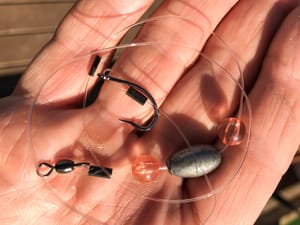Walleye fishing is an art that combines skill, patience, and the right equipment. One of the most crucial pieces of gear is the spinning reel, which can make or break your fishing experience. In this comprehensive guide, we'll delve into the specifics of selecting the perfect size spinning reel for walleye, ensuring you have the knowledge to make an informed decision.
Key Takeaways:
- Understanding the importance of reel size for targeting walleye.
- Key features to look for when selecting a spinning reel for walleye fishing.
- Practical advice on matching reel size with rod action and fishing conditions.
Understanding Spinning Reel Sizes
When it comes to spinning reels, size does matter, especially for walleye fishing. The size of a spinning reel is generally indicated by a number, which can range from 1000 (or 10) for the smallest models, up to 10000 (or 100) for the largest. For walleye, you'll typically want to focus on reels in the 2000 to 4000 range. These sizes offer the best balance of weight, line capacity, and drag strength for the average walleye you're likely to encounter.
A reel that's too small may not hold enough line or have sufficient drag to handle a large walleye, while a reel that's too large can be cumbersome, making it difficult to feel the bite or work your lure effectively. The right size reel will help you cast with precision and fight walleye with confidence.
The Importance of Gear Ratio
The gear ratio of a spinning reel is a critical factor to consider. It refers to the number of times the bail rotates around the spool with a single turn of the handle. For walleye fishing, a medium gear ratio, such as 5.2:1 to 6.2:1, is ideal. This range provides a good balance between retrieval speed and torque, allowing you to work various lures effectively and reel in fish without excessive effort.
A higher gear ratio can be beneficial when you need to quickly retrieve lures or cover more water, while a lower gear ratio offers more power for pulling in larger fish. However, the medium gear ratio stands out as the most versatile for walleye anglers.
Matching Reel to Rod and Line
Pairing your spinning reel with the right rod and line is essential for optimizing your walleye fishing setup. A medium-light to medium-heavy rod with good sensitivity and enough backbone to set the hook is typically recommended for walleye. The reel should complement the rod's action, ensuring a balanced outfit that feels comfortable in your hands.
When it comes to line, monofilament in the 6-10 lb. test range is a good starting point for walleye. However, many anglers prefer braided lines for their no-stretch properties and greater sensitivity. If you opt for braid, consider a 10-20 lb. test, which will provide the strength needed for walleye without sacrificing the ability to cast small lures accurately.
Seasonal Considerations for Reel Size
The time of year can influence what size spinning reel for walleye you should use. During the spring and fall, when walleye are often found in shallower waters, a smaller reel in the 2000 to 3000 range may suffice. These reels are lighter and more manageable for casting lighter lures or jigging.
In contrast, during the summer and winter months, when walleye may be located in deeper waters, a larger reel in the 3000 to 4000 range can be advantageous. The additional line capacity and stronger drag systems can handle the demands of fishing in deeper water or when trolling.
Real-World Examples of Reel Selection
To illustrate the importance of choosing the right reel size, let's consider a couple of scenarios. Imagine you're fishing a shallow, weedy lake in the spring. A 2500 size reel paired with a medium-light rod and 8 lb. test monofilament line would be ideal for casting small jigs and feeling the subtle bites of walleye.
On the other hand, if you're targeting walleye in a deep, clear lake during the summer, a 4000 size reel on a medium-heavy rod with 15 lb. test braided line would give you the strength and capacity to handle deep-diving crankbaits and the occasional trophy-sized fish.
Summary
Selecting the right size spinning reel for walleye is a balance of personal preference, fishing conditions, and the size of the fish you're targeting. A reel in the 2000 to 4000 size range with a medium gear ratio is versatile enough for most walleye fishing scenarios. Remember to match your reel to a compatible rod and line, and consider seasonal changes that might affect your choice. With the right spinning reel, you'll be well-equipped to enjoy a successful walleye fishing adventure. Looking for the best spinning reel for walleye? Check out our top 5 for 2024!
FAQ Section
Q: Can I use a 1000 size reel for walleye fishing? A: While a 1000 size reel can be used for walleye, it's generally better suited for smaller fish due to its limited line capacity and drag strength. For most walleye fishing situations, a 2000 to 4000 size reel is recommended.
Q: Is it better to use monofilament or braided line for walleye? A: Both monofilament and braided lines have their advantages. Monofilament is more forgiving and has some stretch, which can be beneficial when fighting fish. Braided line offers greater sensitivity and no stretch, which can help detect subtle bites. The choice often comes down to personal preference and the specific fishing technique being used.
Q: How do I know if my reel is balanced with my rod? A: A balanced setup should feel comfortable in your hand, with the rod and reel feeling like a natural extension of your arm. The reel should not feel too heavy or too light for the rod. When you hold the rod horizontally at the grip, it should not tip forward or backward significantly.



